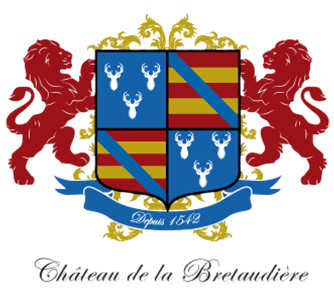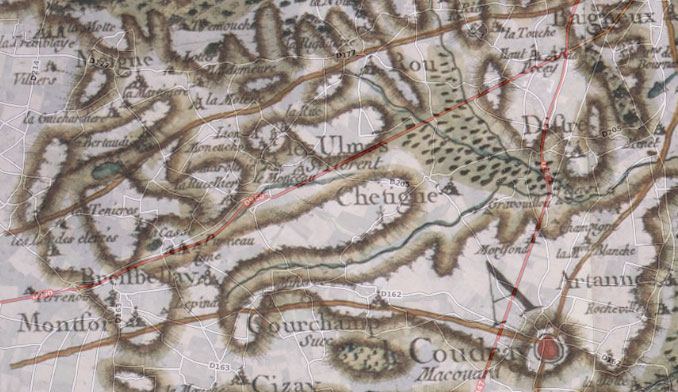History
THE MEDIEVAL PERIOD
14th-15th centuries
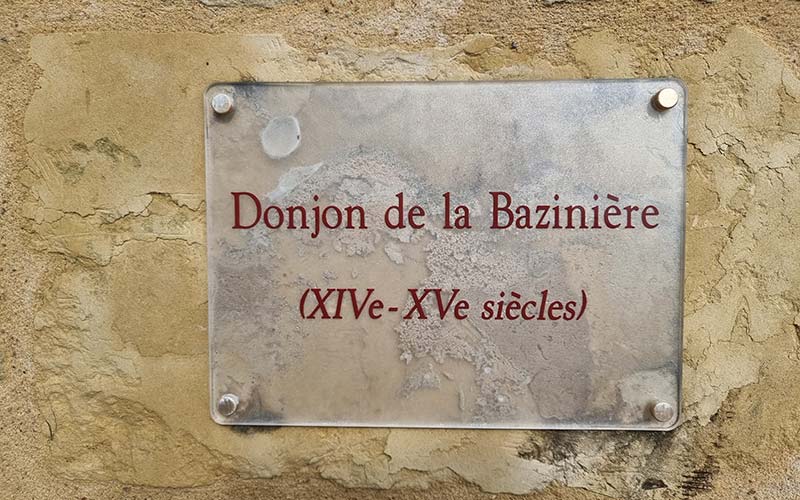
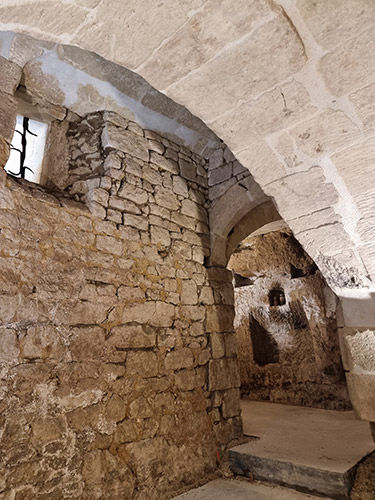
The Bazinière tower
The keep is the last vestige of a medieval tower probably built in the 14th century. All that remains today are the foundations, where you can still make out a typical 14th-century arched arch and the arch of an old staircase.
At the time, the property was called “La Bazouinière” or “La Bazinière” after the Bazouin family.
THE MODERN ERA
16th-18th centuries
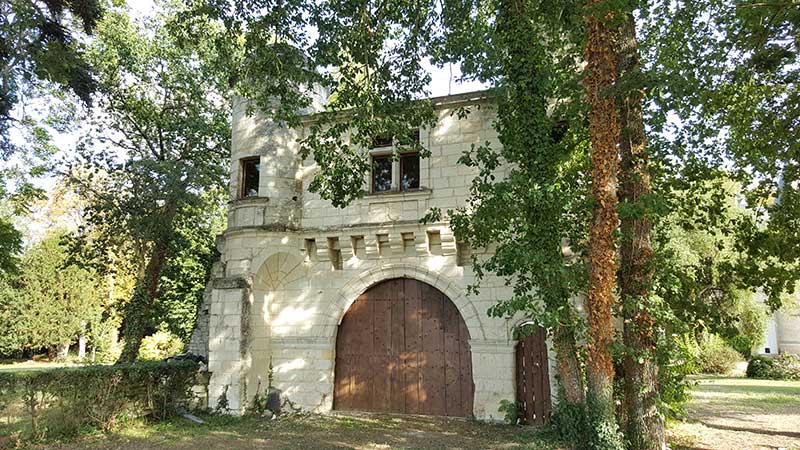
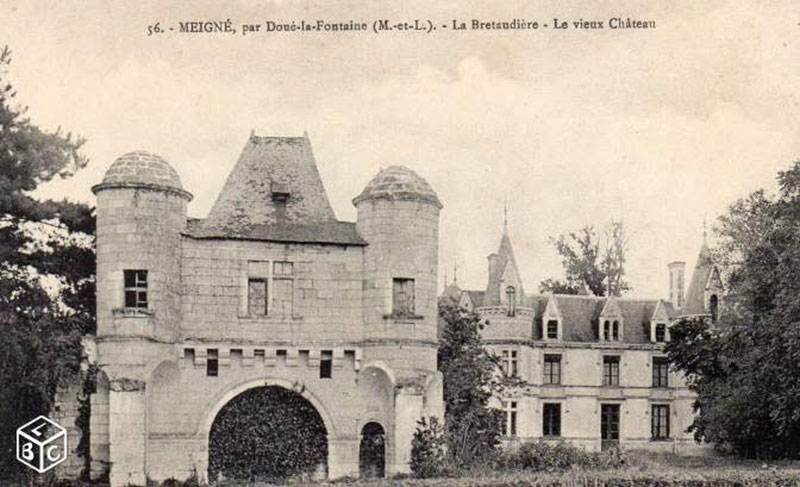
The seigneuries of La Bertaudière and La Rousselière (16th-18th centuries)
At the turn of the 16th century (1), the property probably belonged to Messire Philippe Bertauld (circa 1490-1530), magistrate of the Saumur election and lord of la Rousselière. He undertook the construction of a fortified châtelet, of which an elegant postern with two watch-towers and a wide carriage gate, together with a pedestrian gate, remains today. The property took the name of La Bertaudière.
His son René (circa 1505-1572) was secretary to Cardinal Gabriel de Gramont, ambassador to François I, whom he followed to England, Spain and Rome. He was created Count of the Sacred Palace of His Holiness the Pope, and in 1542 obtained from the monks of Saint Florent the right to build a chapel at La Bertaudière and to have a pew in the place of honor in the church of Meigné.
He devoted himself to the passion of his time: writing. In particular, he translated from Spanish the sentimental short story “ La pénitence d’amour”, published in 1537 and much sought-after by collectors. The French version of Penitencia de amor, prepared by René Bertault for the Lyonnais publisher Denis de Harsy, reveals a genuine appropriation of the Spanish text, reinterpreted as a sentimental novel.
He was attached to the court of Marguerite de Navarre, to whom he dedicated his translation of Antonio de Guevara’s Livre d’Or de Marc-Aurèle .
He also acquired land, notably La Grise, in Le Coudray Macouard
(1) André Sarazin, Manoirs et gentilshommes d’Anjou
The eldest branch of the family kept La Bertaudière, while other descendants inherited La Rousselière and La Grise. However, by inheritance from a cousin, Daniel Bertault (Meigné circa 1659 – 1715), once again combined the first two properties, hence his status as Seigneur de la Bertaudière et de la Rousselière.

Daniel Bertault’s coat of arms
Various family members held important positions in Saumur: Pierre Bertauld (1555-1612) was provost of Saumur, Michel Berthaud (1610-1640) was criminal and civil lieutenant of Saumur. Several family members also converted to the Reformed religion.
Jean Tréton, apothecary, married a great-granddaughter of René Bertauld on January 12, 1650. Their children were born at La Bertaudière, including Jeanne, who married Pierre Perrault, King Louis XIV’s secretary at the Nantes Chamber of Accounts, in Meigné church on October 30, 1695.

The coats of arms of Pierre Perrault and Jeanne Treton can be seen in the d’Hozier armorial
Pierre-Maurice Perrault de Lessart married Marie-Renée Foullon (1711-1743). The latter was the sister of Joseph-François Foullon, Baron de Doué and a famous figure in the Saumur region at the end of the Ancien Régime, who for a time owned Château de La Tremblaye in Meigné.
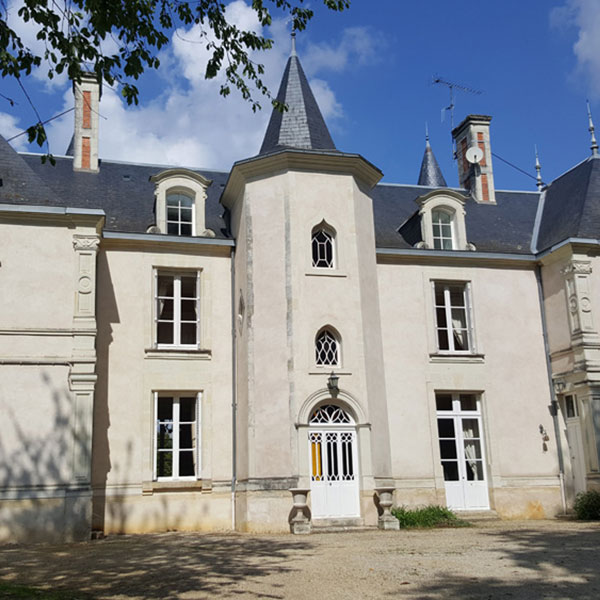
Claude Perrault married Marie-Claude Lespagneul de La Plante in Saumur in 1726. He was also an auditor at the Chambre des Comptes de Bretagne. He inherited the Château de La Brétaudière from the Bertault family via the Treton family, and undertook major renovations, as evidenced by the charming 18th-century façade.
It is also highly likely that he built or became the owner of Château de La Contentinière in Soulaines-sur-Aubance. Claude Perrault was ennobled by his office, and he and his wife had at least one son, Pierre-Claude de La Bertaudière.
Pierre-Claude de La Bertaudière married Laurence Joséphine Jacquine Perrine Falloux du Lys on January 28, 1766 in the church of Saint-Maurille, Angers.
His wife gave him the lands of La Giraudière and La Haute-Sauvagère (Chemillé-en-Anjou) as a dowry. It is highly likely that he inherited the Château de La Contentinière from his parents.
He and his wife lived for a time in Angers, in the parish of Saint-Maurille, before moving to La Brétaudière between 1771 and 1776. Two of their children were born there (Joseph-Marie and Marie-Jeanne), before Laurence Joséphine Jacquine Perrine Falloux du Lys died in 1780.
THE CONTEMPORARY ERA
From the French Revolution to the present day
The French Revolution
In March 1789, Pierre-Claude de La Bertaudière took part in the assembly of the nobility of the Sénéchaussée du Saumurois in preparation for the Etats-Généraux in Versailles. Clearly disinclined to support the excesses of the Revolution, he left La Brétaudière in 1793 following the capture of Saumur by the Vendéens on June 9-10, 1793.
He probably joined the Vendéenne army or hid in a place that seemed favorable to him. One document suggests that he was condemned, while others suggest that he emigrated.
In any case, all his properties were seized, and the Château de la Bretaudière was searched, as the official story goes:
According to tradition, the owners had hidden the château’s silverware in barrels purchased urgently from a nearby cooper. This tradition was sufficiently established that in the mid-twentieth century, the tenant farmer’s descendants, now owners of the neighboring farm, were still looking for these barrels…
The château was sold as national property on Prairial 27, An VI.
A priori, only one of the Perrault children survived the revolutionary period, Claude-Marie Perrault (1771-1849), who, after emigrating, regained possession of Château de La Contentinière and became mayor of Soulaines- sur-Aubance. He died an unmarried man with no descendants.
The 19th century
Charles-Pierre Mame (1747-1825), a printer, owned the château at the turn of the 19th century. La Bertaudière is conveniently located between Angers and Tours, where his two printing works are located.
The Thomas family, solicitors in Angers, took over the property during the Restoration. They tore down the surrounding walls and built the main facade in Renaissance style.
It was also in the 19th century that the property’s name was changed from Bertaudière to Bretaudière, following a common typographical inversion.
Correspondence from the period indicates that Mélanie Waldor, a woman of letters and former muse and mistress of Alexandre Dumas and Cavour, stayed here at least once in 1842 or 1843.
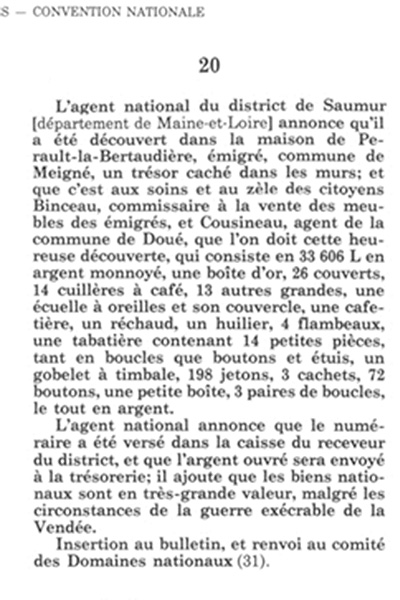
The 20th century
At the turn of the 20th century, the farm was separated from the château. The farmers became neighbors. They gave up winegrowing in the 1970s.
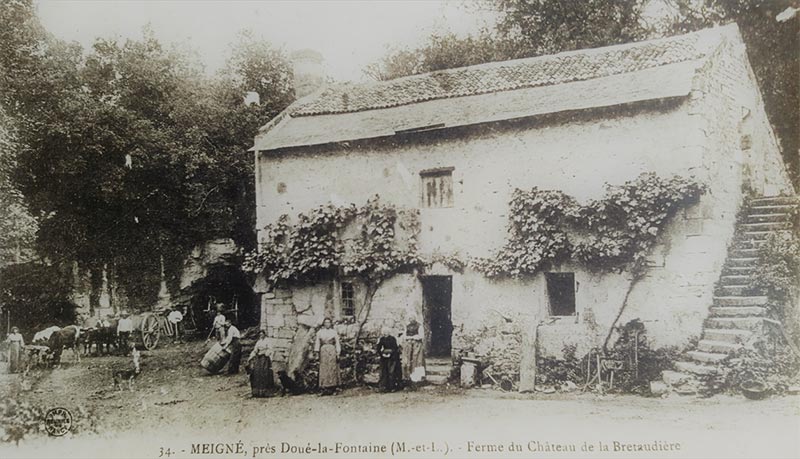
From June 18 to 20, 1940, fighting broke out in the Saumur region. Despite Marshal Pétain’s call to halt the fighting on June 17, cadets from the Saumur cavalry school decided to save the honor of the French army by defending the 40 kilometer front between Gennes and Montsoreau.
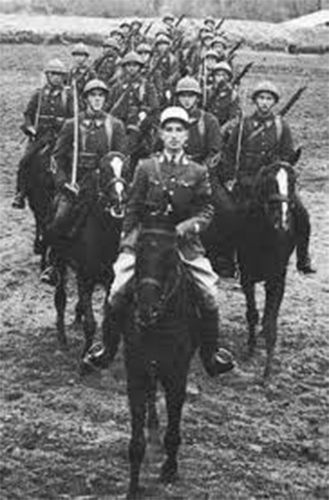
At Gennes, the brigade of Lieutenant Jacques Desplats, killed in action, had to retreat. Some took refuge in the Poterne de la Bretaudière, which was machine-gunned by the Germans. They surrender with panache.
Admiring their heroic resistance, the Germans decided to honor their prisoners and then free them, allowing them to join the free zone once the armistice was signed. This glorious battle, which claimed almost 250 French casualties from Gennes to Montsoreau, earned the Saumur Cavalry School the following citation in the Army Order:
“Under the command of Colonel Michon, reflecting the soul of its leader, the Ecole Militaire de la Cavalerie et du Train (Cavalry and Train Military School) fought on June 19, 20 and 21, 1940, to the very limit of its combat resources, suffering heavy losses, performing acts of heroism and inscribing in the splendor of the Cavalry, a page worthy of all its glorious past. His bravery earned him the homage of his adversary.”
Like the facade of Saumur town hall, the poterne still proudly bears the scars of this first act of resistance. Following this act of bravery, the Germans identified the relatively strategic position of La Bretaudière, and the farm was requisitioned and occupied by the Germans for the duration of the war. The farmers were housed in the old stables.
The property subsequently changed hands twice. It was first bought by the founders of the Nooz chain, then by Me Thibaudeau, a notary in Oloron.
The 21st century
In 2016, the estate came under the Franco-Thai flag, reviving its viticultural orientation and motto: “French wines, Thai signature.”
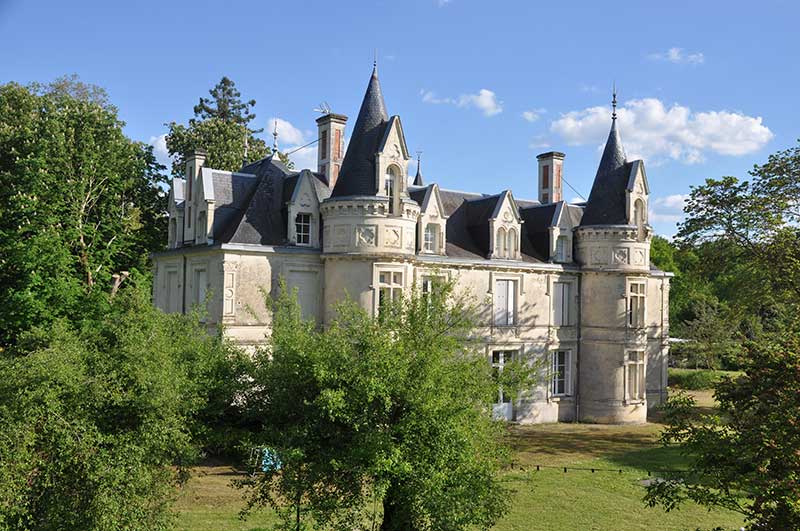
Bibliography
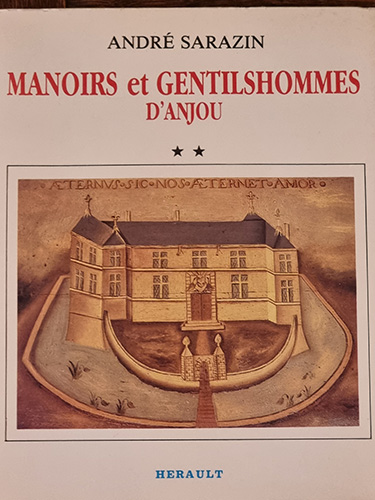
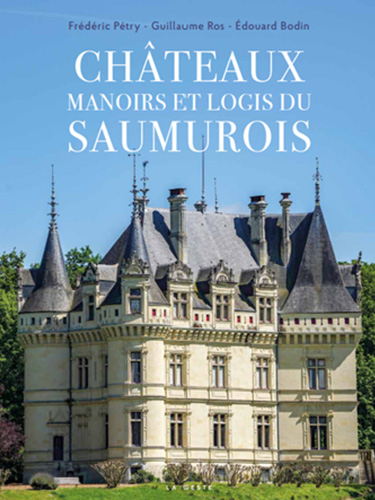
La Bretaudière
Château de la Bretaudière
Meigné – 49700 Doué en Anjou
Contact
Phone : +33 (0) 983 780 501
Email : info@labretaudiere.net
